How to Leverage Professional Development to Improve Employee Retention
When competition for technology talent intensifies, an employee retention strategy is one of the most effective tools available to employers. While bringing talent on board can often be the priority, companies can overlook implementing necessary approaches to retaining those employees. And that’s not even considering the fact that retention is much less expensive than hiring.
There are plenty of tactics for improving employee retention (such as flexible work policies, regular pay rises and various non-salary perks), but one of the most effective is professional development.
Research shows us that people who feel supported to grow and achieve more at work will feel more inclined to stay. More than half (69%) of Aussie workers changed jobs because of the limited career advancement opportunities in their previous role, with 16.5% citing a lack of development or training as their reason for leaving. That’s according to an Institute of Managers and Leaders 2021 survey of employees including those in technology roles.
Technology and digital recruitment are an “always-on” exercise and companies need a multifaceted strategy to ensure they stay ahead of their staffing needs. So, what steps can you take to make professional development front and centre for your workforce?
Think About the Long-Term
Before rolling out development policies and plans for employees, aim to align them with the organisation’s current and future goals. This will motivate employees because they will know how they are contributing to the bigger picture and help everyone achieve the best possible results.
Think about the current strengths and weaknesses of your teams and which areas should be addressed most urgently. Where are the opportunities for improving competitiveness? What new skills will your teams need if the company branches out with a new type of product or client?
Asking questions related to overall business goals will help you map out clear objectives and ways to measure progress.
Collaborate and Set a Plan
To get employees invested in their development, collaboration is essential. Professional development is ultimately a personal undertaking motivated by an individual’s aspirations.
Consult with team members one-on-one and ask them about their career goals and where they would like to improve. Discuss how they could make use of their strengths with new tasks, projects or even new areas of the business. Don’t forget to take notes of these discussions!
Development conversations do involve give-and-take between managers and employees, so ask about what you can do to support an employee’s development in a particular area. For example, do they need a few hours per week to learn a new language or platform? Approval for a future secondment?
After these discussions, you can write up a professional development plan for each employee with a timeline and specific milestones that should be reached along the way. Note that development plans are not static documents – they can and should be adjusted over time.
Combined with regular check-ins, which can range from fortnightly or monthly coffee catch-ups to annual reviews, a written plan keeps everyone accountable and motivated.
Be Hands-on in Your Approach
When most people hear “professional development”, they think of upskilling. Short courses, certification programs or other formal training can certainly be a valuable solution if you or an employee have identified a gap in skills for specific technology roles.
While training courses can be instrumental in development plans, there are other practical ways to help employees build on their skills and feel more engaged with their work. Some examples include:
- Pitching new projects: Give people opportunities to float new ideas for projects that will deliver a benefit to the business.
- Training new employees: Enlist a team member as a trainer for a new hire.
- Coaching/mentoring: Assign an employee as a coach or mentor to a colleague or give employees access to a mentor for a specific purpose, such as taking on a leadership role.
- Provide thought leadership: Experienced employees might have a wealth of knowledge to share with the industry. Give them opportunities to publish insights on specific topics to your company’s audience.
- Elect customer champions: Employees who have an aptitude for communicating technical issues to a non-technical audience could act as brand ambassadors. This could involve hosting webinars or events for clients or customers.
These are just some examples of what you can include in strategies for retaining employees. Giving people new ways to add accomplishments to their resumes can have ongoing positive impacts on retention over time.
The scope of tech jobs will set the limits of what development strategies can be used, but personalisation for each employee is key to making it work well.
Provide Pathways for Promotion
Internal mobility is also a significant factor in employee retention. If your organisation is making efforts to provide professional development, it also makes sense to give people opportunities to get promoted!
Promoting current employees can save a fair amount of time and money, on recruitment, particularly in the highly competitive talent markets of Brisbane, Canberra and Melbourne.
Research by LinkedIn has found that companies with high levels of internal mobility can retain employees for an average of 5.4 years. For companies that struggle with mobility, the average retention span is 2.9 years – almost half as long.
The best approach will vary depending on factors such as company size and structure, the nature of projects carried out, services offered to clients and more. A possible starting point is to have an ‘internal first’ hiring policy where managers must scout (and advertise vacancies to) current employees for a role before looking for external candidates.
Summary
An employee retention strategy that emphasises professional development is a win-win scenario for both employees and employers. By giving people opportunities to continually build their CV while they’re in a role, you can drive up employee engagement and make your organisation a more attractive place to work.
Workers who have opportunities for career development tend to stay longer with a company, which can strengthen a workforce during acute talent shortages.
At Emanate Technology, our team of technology and digital recruitment specialists has a wealth of knowledge on how you can find and nurture the best talent for your business.
Get in touch with our team to find the best tech talent in Adelaide, Brisbane, Canberra and Melbourne.






